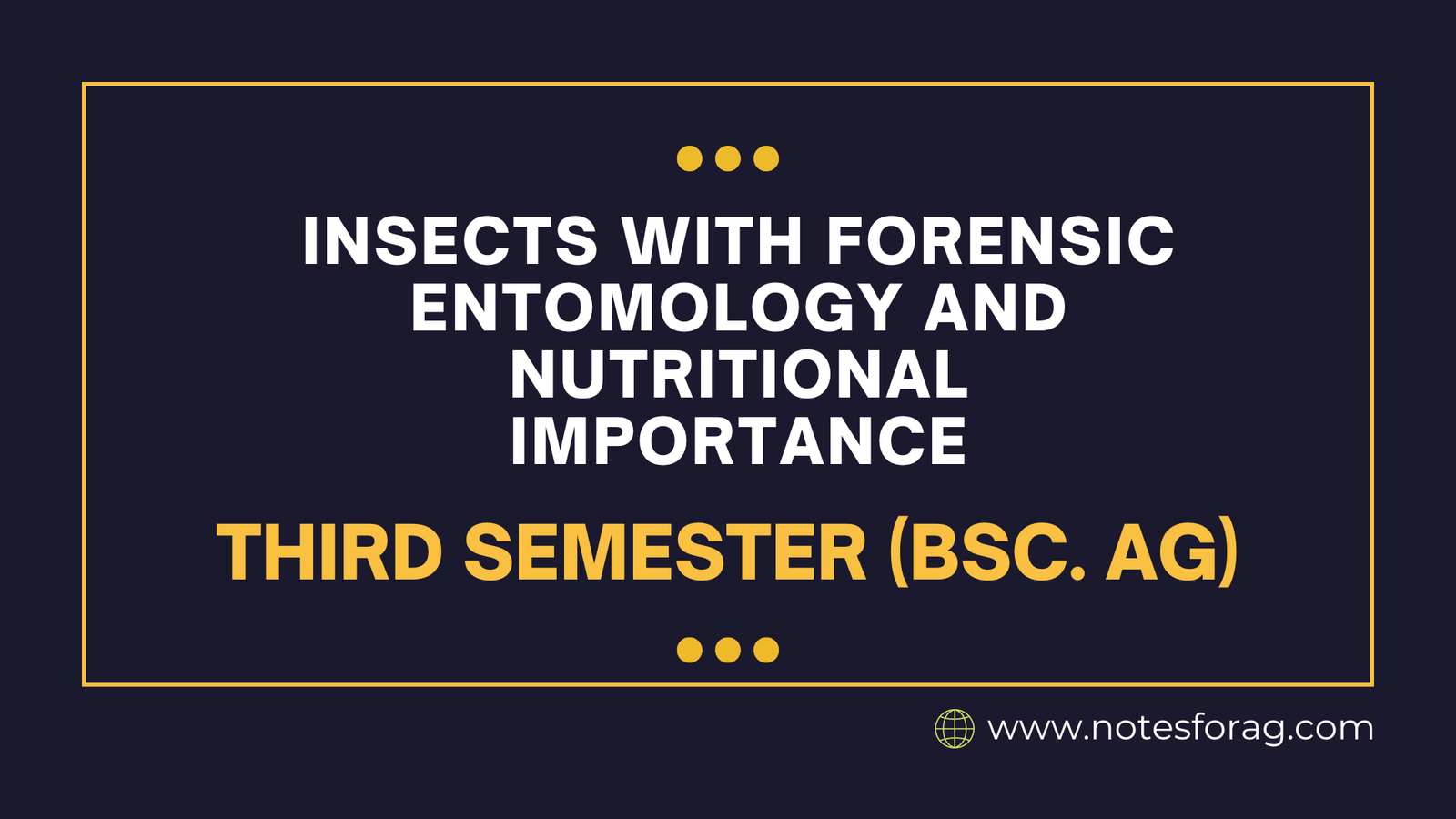In Forensic entomology, species such as blowflies and beetles are critical for determining the time of death in human bodies because they inhabit and decay remains in predictable patterns. Insects serve important roles in forensic science and nutrition. Insects like crickets, mealworms, and grasshoppers provide a high-protein, sustainable food source that is rich in critical elements. Their environmental benefits and resource efficiency make them a viable alternative to traditional cattle. Thus, insects are important both for crime prevention and as a sustainable food source.
Table of Contents
Introduction to Forensic Entomology
Forensic entomology is a multidisciplinary science that combines the study of insects with legal investigations, providing unique insights into crime scenes, notably in fatalities. Forensic entomologists can estimate time of death by analyzing the life cycles and habits of diverse insect species, which is critical in criminal investigations. The presence of specific insects on a decomposing body can provide crucial information about the circumstances of a death, allowing investigators to construct a timeline of events. Insects play significant roles in both forensic science and nutrition. Here’s a breakdown of how they contribute in each field:
Forensic Importance
Insects serve important roles in two seemingly unrelated fields: forensic science and nutrition. Forensic entomology explores the presence and succession of insects on decomposing remains to determine the time of death, whereas nutritional entomology studies the possible dietary benefits and use of insects as sustainable food sources. In forensic entomology, insects are utilized to help solve crimes, notably in estimating the time of death in human remains. The main insects involved in this area are:
Forensically Important Insects:
- Blowflies (Calliphoridae): The most important group in forensic entomology. Blow flies are frequently the first insects to colonize a rotting body, and their life cycle stages aid in determining the post-mortem interval (PMI).
- Flesh flies (Sarcophagidae): Flesh flies, like blow flies, are drawn to decomposing tissue. They lay larvae (rather than eggs), which speeds up colonization.
- Houseflies (Muscidae): Though not as common as blow and flesh flies, house flies are found on decomposing carcasses and can aid in forensic investigations.
- Beetles (Coleoptera): Some beetles feed on deteriorating tissues (for example, Dermestidae or skin beetles) and appear later in the decomposition process, providing information regarding decay progression.
- Moths (Lepidoptera): Certain moths, such as clothing moths, can be found on corpses in the advanced stages of decomposition, especially if the body is kept inside.
Nutritional Importance
Edible insects are a valuable source of nourishment in many cultures, and they are gaining favor as a sustainable alternative to traditional cattle.
Nutritionally Important Insects:
In recent years, the study of insects as a feasible food source has gained interest due to their amazing nutritional benefits. Insects have a high protein content, accounting for 30% to 80% of their dry weight.
- Crickets (family Gryllidae): High in protein, fiber, and vital micronutrients such as iron and vitamin B12. Cricket flour is becoming a popular cooking ingredient.
- Mealworm (Tenebrio molitor): These larvae are high in protein, good fats, and fiber, making them appropriate for both human diet and animal feed.
- Grasshopper and locusts (Acrididae): Grasshoppers, a traditional food source in many cultures, are high in protein and thought to be more sustainable than many conventional meats.
- Silkworms (Bombyx mori): Silkworm pupae, a byproduct of the silk business, are consumed in many countries and provide an excellent source of protein, vitamins, and minerals.
- Black soldier fly larvae (Hermetia illucens): These larvae, which are primarily used as animal feed but are also becoming popular as human food, are high in protein and other critical components.
Benefits of Edible Insects
- High nutritional value: Many edible insects are high in protein, good fats, vitamins, and minerals (including iron and zinc).
- Environmental sustainability: Insects require less land, water, and feed than traditional livestock, making them a sustainable food source.
- Low greenhouse gas emissions: Insect farming emits much fewer greenhouse gases than typical meat farming.
These insects play an important role in both crime prevention and global food security by providing sustainable and nutritious food.
Frequently Asked Questions
What role do insects play in forensic science?
In forensic science, insects help determine the period since death (post-mortem interval or PMI). Certain insects, such as blow flies and beetles, are drawn to decomposing bodies and colonize them in predictable stages, allowing us to estimate how long a body has been dead.
Which insects are commonly consumed for nutrition?
Crickets, mealworms, grasshoppers, locusts, silkworm pupae, and black soldier fly larvae are among the most commonly eaten insects. These insects are high in protein and nutrients, making them a popular dietary choice in many cultures and a developing trend in Western cuisine.
Related Articles

